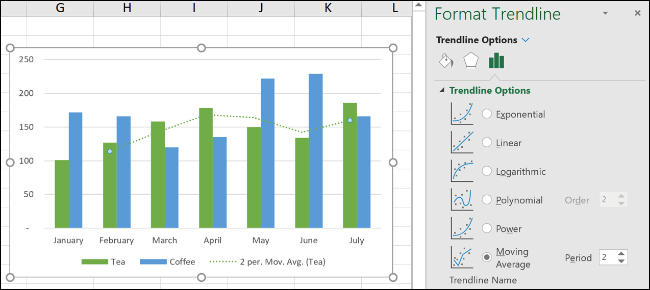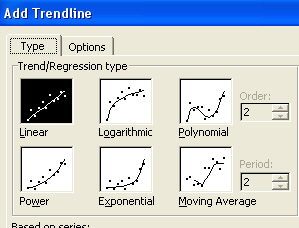

I am trying to solve a similar kind of problem. 2, then the forecast for x0 = 2 should be exp(.2) = 1.22.

693 from you log-log linear regression model is. Now suppose that the forecasted value for. then exp(z0) would be the forecasted value you are looking for. For any given value x0 of x the regression model will provide a forecast of ln y for ln x0 (using the TREND function). This becomes ln y = b * ln x + ln a, which can be modeled via linear regression. Now if you have transformed both y and x using LN, then you need to reverse the process using exp to get the forecasted value you want.Į.g. I hope I could explain my problem more clearly.įor ordinary linear regression you can do prediction using the TREND function as explained on one of the following webpages:įor any value of x (or x’s) this yields a forecasted (or predicted value of y).

The 90% CI is the boudn around the single point estimate in my case. I expect 90% CI to be close to the 1724.8 resulted from the linear curve above. In order to use Excel data analysis, I transformed it to log-log curve: log(y) =log(56.706) + 0.4747 * log(x)Įxcel output similar to the above linear curve produced:ĩ0% CI = 10^0.047 = 1.11. this formula I got from some online research.ī- Using Power curve: y = 56.706*x^0.4747 Using excel data package to run the regression, I got: Hi Charles, thank you again for your time. I desperately need to solve this model (y = a * x ^ b * z ^ c) and find its equations. Thus we found the values of the constants (a) and (b)īut if the equation is with this model (y=a*x^b*z^c), How will we find the values of a, b, and c ? Will the equation for finding a and b remain as above, or will they change !! How do I find the formula for the value of c! Y ̅=(∑Yi)/n where n=number of independent variablesĪnd b=(n ∑Xi Yi- ∑Yi ∑Xi)/(n ∑Xi^2- (∑Xi)²) If the equation was(y=a*x^b), the solution would have been like this: The solution that I did is at the bottom, But I stopped when I wanted to find the formula for the constant c. I know that I have to convert the equation into a linear equation but my question was how did I find the equation that represents the constants a, b, c. I would like to thank you for your modesty and your patience first. We haven’t studied the level-log regression, but it too can be analyzed using techniques similar to those described here. The second is described in Exponential Regression and the fourth is power regression as described on this webpage. We dealt with the first of these in ordinary linear regression (no log transformation). Observation: In the case where there is one independent variable x, there are four ways of making log transformations, namely Observation: Thus the equivalent of the array formula GROWTH(R1, R2, R3) for log-log regression is =EXP(TREND(LN(R1), LN(R2), LN(R3))). For example, if we want the y value corresponding to x = 26, using the above model we getĮxcel doesn’t provide functions like TREND/GROWTH (nor LINEST/LOGEST) for power/log-log regression, but we can use the TREND formula as follows: We can also create a chart showing the relationship between ln x and ln y and use Linear Trendline to show the linear regression line (see Figure 3).Īs usual, we can use the formula described above for prediction. We can also see the relationship between x and y by creating a scatter chart for the original data and choosing Layout > Analysis|Trendline in Excel and then selecting the Power Trendline option (after choosing More Trendline Options). We now use the Regression data analysis tool to model the relationship between ln y and ln x.įigure 2 – Log-log regression model for Example 1įigure 2 shows that the model is a good fit and the relationship between ln x and ln y is given byĪpplying e to both sides of the equation yields The table on the right side of Figure 1 shows y transformed into ln y and x transformed into ln x. It follows that any such model can be expressed as a power regression model of form y = αx βby setting α = e δ.Įxample 1: Determine whether the data on the left side of Figure 1 is a good fit for a power model.įigure 1 – Data for Example 1 and log-log transformation Observation: A model of the form ln y = β ln x + δ is referred to as a log-log regression model. This equation has the form of a linear regression model (where I have added an error term ε): Taking the natural log (see Exponentials and Logs) of both sides of the equation, we have the following equivalent equation: Another non-linear regression model is the power regression model, which is based on the following equation:


 0 kommentar(er)
0 kommentar(er)
